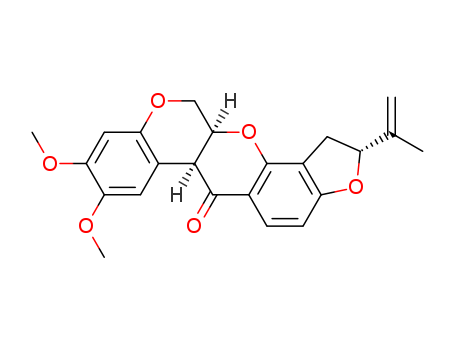10.1016/j.ab.2010.02.026
The research focuses on the development of a method for synthesizing three medium-chain acyl-CoAs from unsaturated and less common fatty acids that are not commercially available. The key chemicals involved in this research include cis-4-decen-1-al, hydrocinnamic acid (3-phenylpropionic acid), anhydrous ethylchloroformate, ammonium formate, silver nitrate, thionyl chloride, 6-methyl-2-heptanol, p-toluenesulfonyl chloride, potassium phosphate, cytochrome c, potassium cyanide, phenazine ethosulfate, N-ethylmaleimide, rotenone, and CoASH (coenzyme A trilithium salt). These chemicals play crucial roles in the synthesis of the fatty acids and the subsequent formation of the acyl-CoAs. For instance, ethylchloroformate is used to form mixed anhydrides of the fatty acids, which are then reacted with CoASH to produce the desired acyl-CoAs. The study also employs various solvents such as methanol, acetonitrile, and tetrahydrofuran, as well as reagents for purification and characterization processes like 2-(2-pyridyl)ethyl-functionalized silica gel for solid-phase extraction and ammonium formate for HPLC elution. The synthesized acyl-CoAs are characterized using techniques such as gas chromatography/mass spectrometry (GC/MS), nuclear magnetic resonance (NMR), and high-performance liquid chromatography with ultraviolet detection and tandem mass spectrometry (HPLC–UV–MS–MS/MS). The purified acyl-CoAs are then used as substrates for measuring acyl-CoA dehydrogenase activities in rat skeletal muscle mitochondria, providing valuable insights into the enzymatic activities related to fatty acid oxidation.
10.3109/14756366.2012.752363
The research aimed to synthesize and evaluate the antifungal and cytotoxic properties of 14 different 2-[(1-methyl-1H-tetrazole-5-yl)thio]-1-(phenyl)ethanone derivatives. The study was motivated by the increasing incidence of fungal infections, particularly those caused by Candida species, and the need for new antifungal agents due to growing drug resistance. The compounds were synthesized using a one-pot method involving 1-methyl-1H-tetrazole-5-thiol and various phenylacetyl bromide derivatives. The structures were confirmed through IR, 1H-NMR, 13C-NMR, FAB-MS, and elemental analysis. The synthesized compounds were tested for their anticandidal activity against eight Candida species using the microbroth dilution method and for cytotoxicity against NIH/3T3 cells using the MTT assay. The results showed that several compounds exhibited potent antifungal activity, with some displaying better efficiency than the reference drug ketoconazole, particularly against C. albicans strains. Compounds 1, 12, and 13 were highlighted for their selective anticandidal effect and low cytotoxicity, suggesting that chloro substitution on the benzene ring enhances antifungal activity. The study concluded that these tetrazole derivatives could serve as potential candidates for the development of new antifungal agents.



 N,
N, T
T


